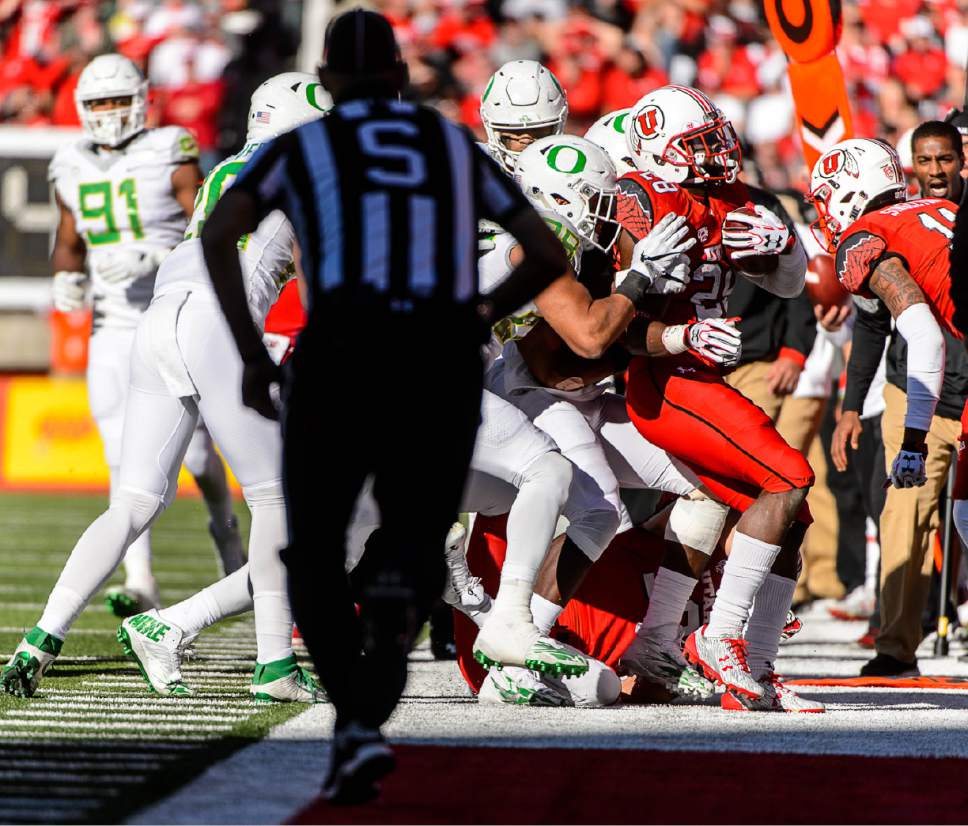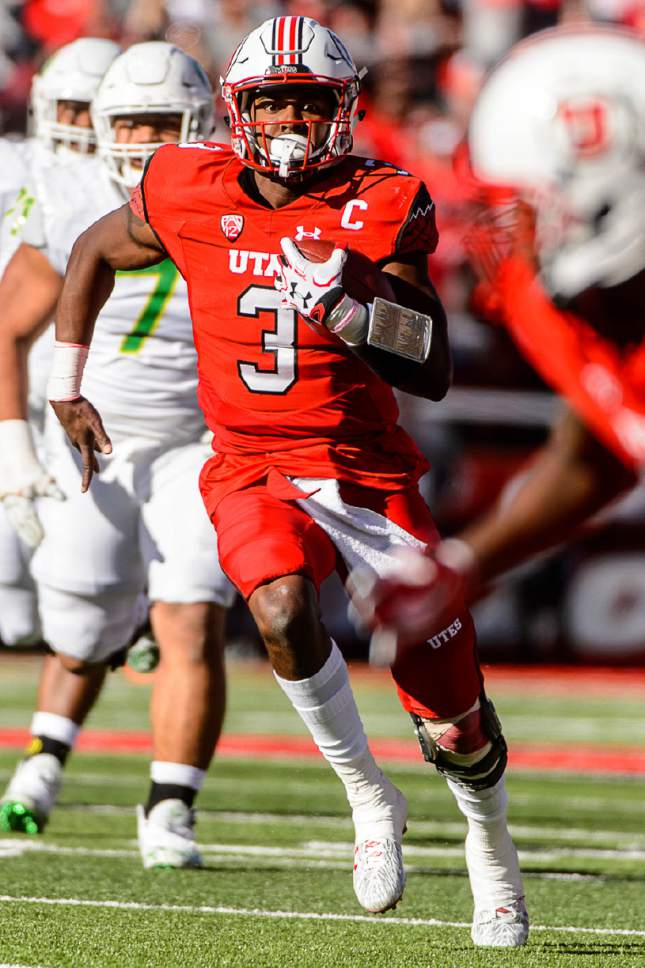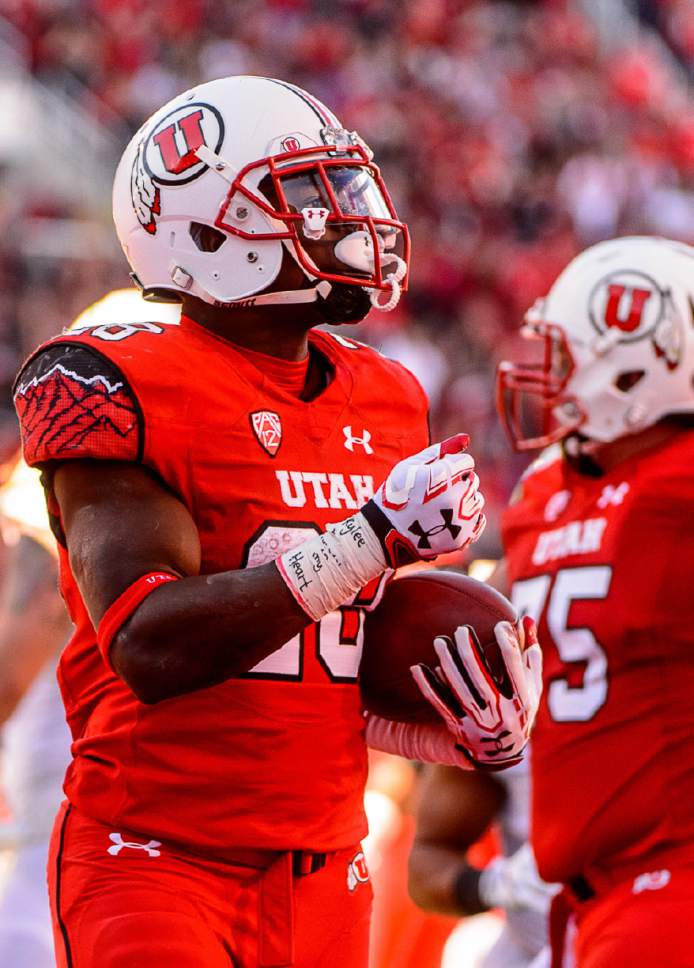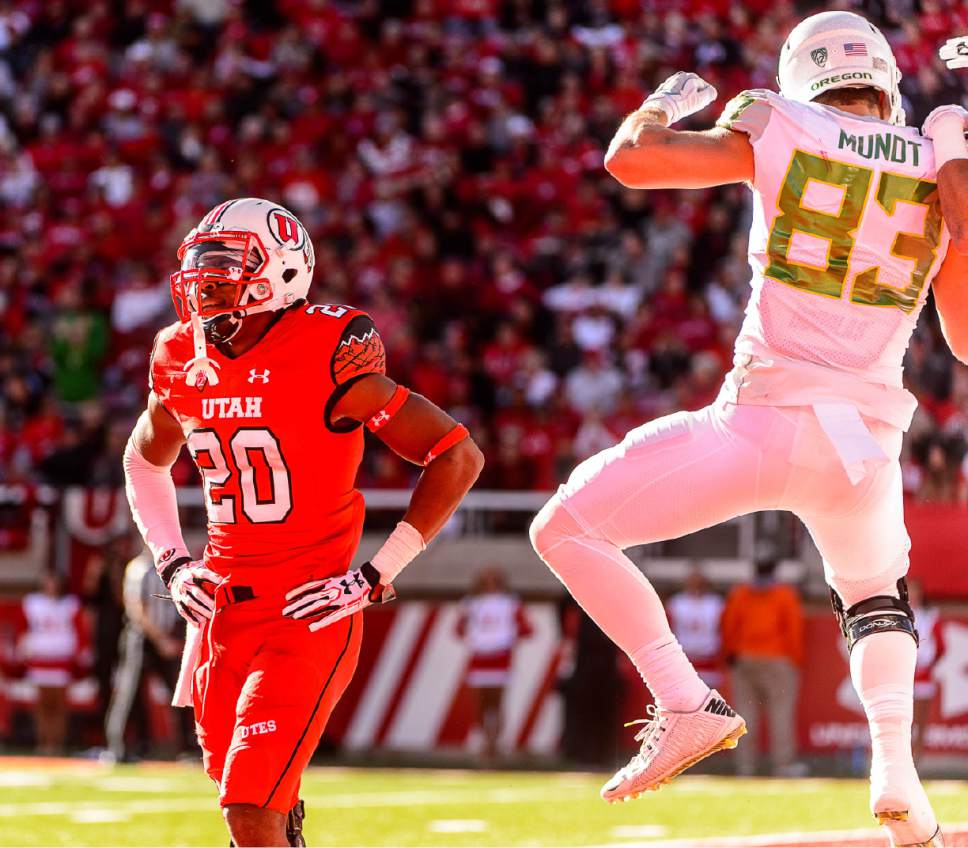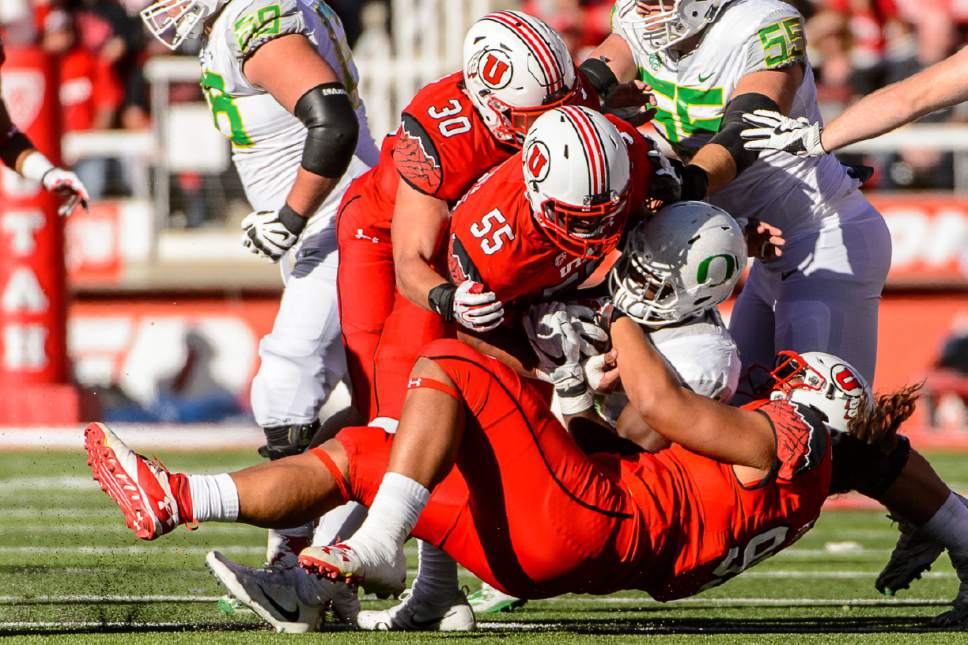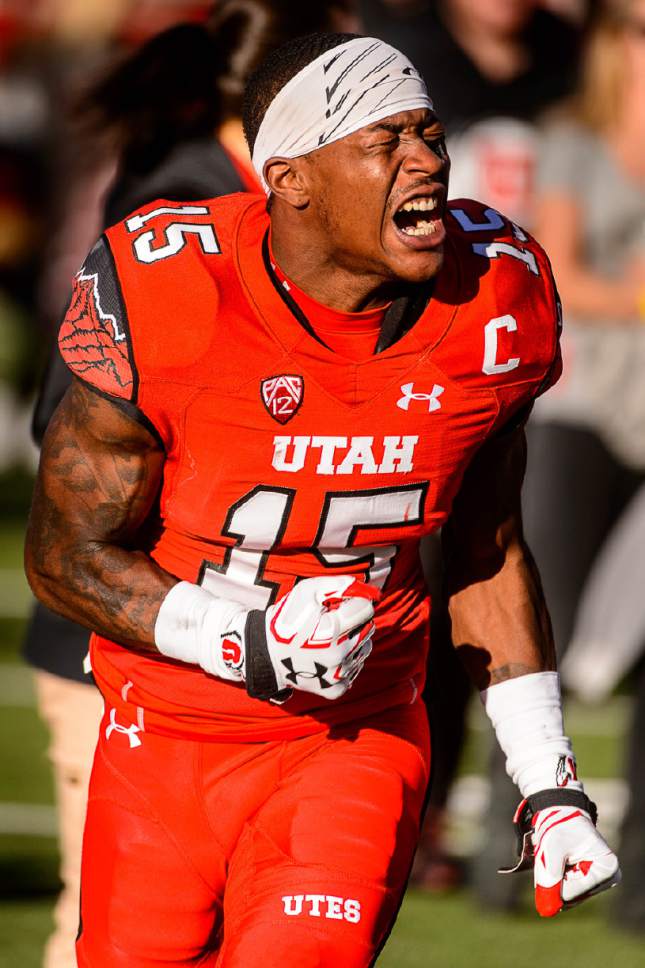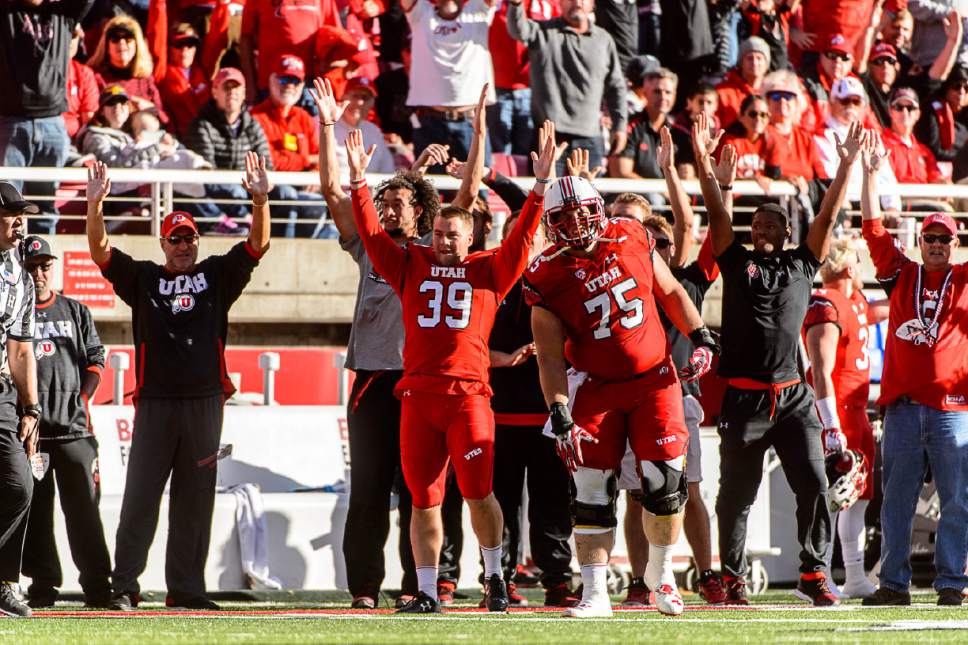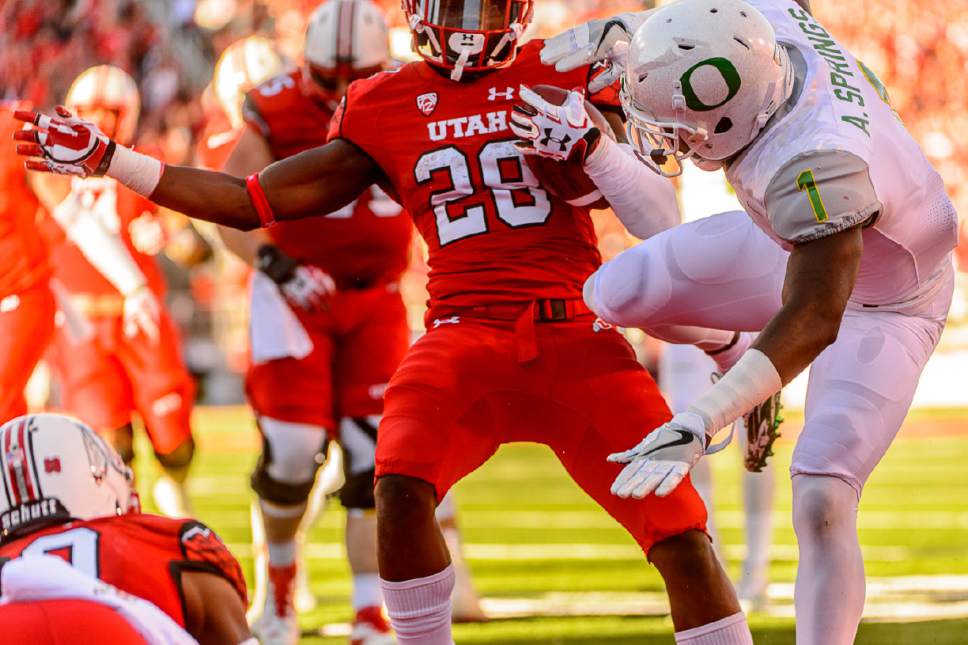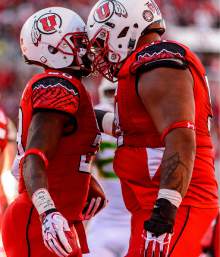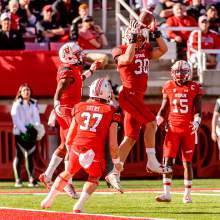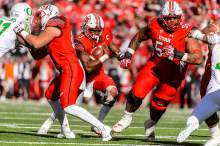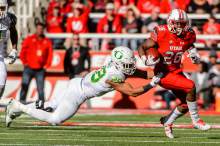This is an archived article that was published on sltrib.com in 2016, and information in the article may be outdated. It is provided only for personal research purposes and may not be reprinted.
Under Mark Helfrich, Oregon had never won a game it trailed after three quarters. Under Kyle Whittingham, Utah had gone 82-6 in games it led at halftime.
But on Saturday, historical precedent took a backseat, leading to an unpredictable upset for wholly predictable reasons.
Utah (8-3, 5-3), which dropped to 21 in Sunday's AP poll after falling to Oregon 30-28 at home on Saturday, will have plenty of painful hours — or days, or weeks — to parse over what led the 14.5-point favorite to falter and miss one of their best windows to finally go to the Pac-12 Championship.
Certainly, there will be those who second-guess the last defensive call, a max blitz that UO signal-caller Justin Herbert beat with a 17-yard throw to Darren Carrington with not an inch to spare. There will be those who question why Utah went away from running back Joe Williams, who got only five carries in the final quarter despite averaging 6.5 yards per rush.
But two major factors that decided the game — Utah's inability to limit big plays, and the inconsistency of the Utah's offense particularly passing the ball — were ones that anyone could have seen coming.
Whittingham sounded weary after the loss that made Utah's South Division hopes crash and burn.
"We knew what type of talent Oregon had," he said. "I think our guys knew what they were up against."
Even in wins, Utah's defense has had a tackling problem. Whittingham brought it up last week after a blowout of Arizona State, in which broken plays helped get the Sun Devils to over 300 passing yards. Linebackers have lacked the physicality necessary to drag down bigger bodies, and plays out at the perimeter have challenged the ability of Utah's corners (175-pound Dominique Hatfield, 185-pound Reggie Porter, 180-pound Justin Thomas) to wrap up.
There's also been zone defense issues throughout the season: The Utes circled that as a problem after a game against UCLA in which they allowed a season-high 474 passing yards from a back-up quarterback.
Neither had been addressed to an adequate degree against Oregon. Junior running back Royce Freeman, a preseason potential Heisman candidate, had his best game in a month-and-a-half, dragging would-be tacklers as he found space against Utah's line. Fellow back Tony Brooks-James worked the edges, and the duo helped power a rushing attack that gained more yards than any opponent this season.
There were also soft spots in zone coverage that were easy to recognize for Herbert, a true freshman: He worked the middle of the field underneath the safeties, as well as the sidelines. Receivers Jalen Brown (89 yards) and Johnny Mundt (72 yards) had contested catches, but also caught passes with defenders yards away, struggling to make up ground.
"Zone coverages were ridiculously bad," Whittingham said, repeating a sentiment he had expressed after UCLA. "Our pattern reading, our route recognition, our route awareness in our zone drops are awful. And they exploited that over and over and over."
Of course Oregon's own secondary came in with similar concerns, ranked 11th in the Pac-12 in passing yards allowed. In the first half, Utah moved the ball as one would expect against that caliber of defense, as junior Troy Williams was 13 for 16 with 158 yards.
But red zone woes cropped up once again. Utah only got one touchdown out of 255 first-half yards, fumbling once inside the 15 to blow a chance to start fast against another underdog foe — another trend this season. Utah's red zone scoring rate for the year is only 75.6 percent, which is 113th in the country.
In the second half, Utah again struggled to capitalize but in a different way. Williams was only 7 for 14 after the half with 77 yards. Five of those completions came on the same drive: the 75-yard campaign in the fourth quarter when the Utes were striving to get their lead back.
The four prior drives had ended with 3-and-outs against one of the league's worst defenses. The third down plays, including three with 9 yards or more to go, ended in this sequence: a quarterback scramble short of the marker, a sack, a quarterback scramble short of the marker and an incompletion.
"We've got to finish drives," Whittingham said. "Moving the ball between the 20s is all fine and dandy, but it doesn't mean anything if you don't finish drives."
Williams rating was 143.5, better than his season average. He had 235 yards and completed two-thirds of his passes, also better than season average. But better than Utah's average wasn't good enough on Saturday.
The game began with a farewell to Utah's seniors — a reflection of just how difficult it will be for the team to reload next season. Among the honorees were three starting offensive linemen, the team's top sack artist, a 1,000-yard rusher, the top receiver, the four top cornerbacks, and the all-time leading scorer and kicker in school history.
As the Utes look to recover for the rest of the season, then attempt to build back up for another campaign to get a division title, players, coaches and fans can lament the problems that led to a disastrous Senior Day defeat against the Ducks.
But no one can say they couldn't have seen it coming.
Twitter: @kylegoon —
No. 21 Utah at No. 9 Colorado
P Saturday, 5:30 p.m.
TV • Ch. 13


